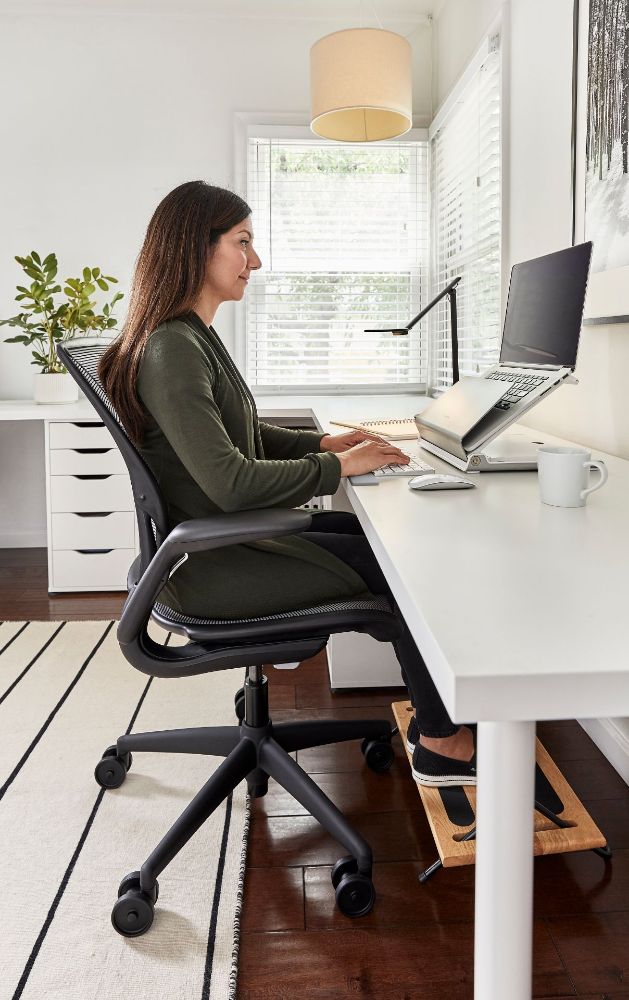How to set up your screen (and everything around it)
The correct screen height for you is determined by your height and other personal factors. There’s no one-size-fits-all rule of thumb here. The list below covers all the bases to ensure you get your ergonomic work station just right.
1. Eye Level:
We’ve said it before, but it’s worth saying twice – the top of your screen should be positioned at, or slightly below, your eye level. This means you can maintain a neutral gaze without straining your neck or tilting your head excessively. Ergonomic tools such as monitor stands and adjustable monitor arms are there to help you achieve this. (If you’re someone who can’t live without a tape measure, then ergonomic guidelines state that the top of your screen should be between 5 and 8 centimetres above seated eye level.)

2. Viewing Distance:
Sit a comfortable distance from your screen, typically about an arm’s length away. You should be able to easily read and view what’s on your screen without leaning forward or squinting (never a good look).


3. Individual Adjustments:
Take the time (the process could span a few days!) to fine-tune your screen height based on personal comfort and visual preferences. Experiment with small adjustments and take note of any discomfort or strain in your neck, shoulders or eyes. Final tweaks should hopefully determine your optimal screen height.
4. Ambient Lighting:
It might be romantic to watch a movie in the dark, but did you know that the contrast between the brightness of the screen and the room itself can strain your eyes? (And there’s nothing romantic about a headache, is there…) The same goes for workspaces. Ambient lighting should be balanced to avoid drastic variations in brightness. Make sure that lighting is evenly distributed in the room to create a visually consistent environment.
5. Task Lighting:
It’s a great idea to supplement ambient lighting with task lighting, which provides focused illumination for specific tasks such as reading documents or writing. If you can adjust the lighting in your immediate work area to meet your specific needs, you’ll be much more likely to avoid strain.

6. Screen Size:
Bigger is always better, right? Well not if you don’t adjust your ergonomic setup when introducing a bigger screen. Remember to consider viewing distance, screen height, desk space and the need for adequate resolution and field of view, otherwise you’ll end up with bad posture and dealing with strain. Adjusting the position of your big screen and making any necessary ergonomic modifications will ensure a comfortable and productive setup (that successfully hides you from your boss – bonus.)
7. Adjustments for Bifocals:
When using bifocal lenses and glasses (which have distinct areas for near and distant vision) you’ll probably have to adjust your head and neck position to look through the correct part of the lens to see the screen clearly. This adjustment can influence your overall posture, so make sure your screen, chair and desk setup encourages natural alignment.
